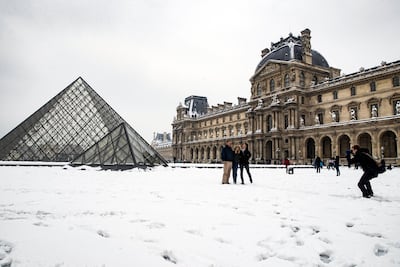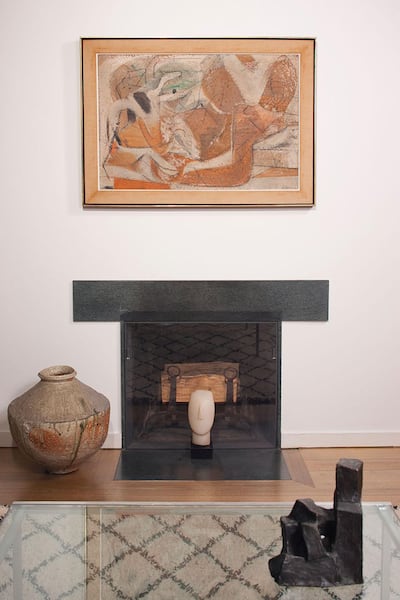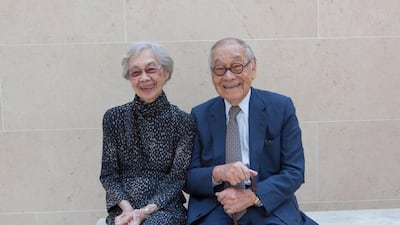The art collection of one of the greatest architects of the twentieth century, IM Pei, will go on the auction block with Christie's this autumn, a few months after he died at the age of 102.
Pei balanced the clean lines of Modernism with a monumentality and gravitas that lent a stately air to the museum, commercial, and university buildings he realised. His most famous project remains that of the glass pyramids that reimagined the entrance to the Musee du Louvre in Paris; but he also designed the Bank of China Tower in Hong Kong, the Museum of Islamic Art in Doha and the east wing of the National Gallery of Art in Washington DC.
Based in the US from 1935 onwards, after he travelled from China to study at the University of Pennsylvania, Pei built up a major collection of paintings and sculptures with his wife Eileen Pei. Eileen Pei died in 2014.

The couple held particularly strong collections in Abstract Expressionism, having been friends with many of the artists in that movement. The collection includes such luminaries as Barnett Newman, Franz Kline, and Willem de Kooning, as well as Isamu Noguchi, Pierre Matisse and Henry Moore.
The Peis also collected modern and contemporary Asian artist such as Zao Wou-Ki and Li Keran. In total the works are expected to fetch $25 (Dh92m) million, and will be auctioned off across Christie’s outposts in Hong Kong, London and Paris.
In a statement, Liane Pei, one of the Peis’ three children, said that her parents frequently received artists such as Caro, Noguchi, and Matisse at their home in New York.

“My parents cherished these friendships,” Liane Pei said. “Even when these friends were far away, however, it never felt like that. We lived with their art every day and so they were always present. In that respect, I believe my parents could not have been happier, as they found inspiration in, and were always surrounded by, their treasured friends.”
Many of the Abstract Expressionists paintings are museum-quality. Two Untitled paintings from 1950 by Barnett Newman, for example, come from a series of six explorations of the vertical axis that Newman painted in 1950; three others are in the museum collections of MoMA, the Art Institute of Chicago, and the Menil Collection, Houston. These two were given to the Peis by Annalee Newman herself, whom Liane Pei says she adored "as a grandmother", and are now expected to fetch $5m and $8m In New York.
Other works include a De Kooning painting, Brown and White, circa 1947, and Jean Dubuffet's oil canvas La Brouette (The Wheelbarrow), an oil of a wheelbarrow. The painting is part of the famous Hourloupe cycle, which Dubuffet, also a close friend of the Peis, worked on from 1962 to 1974, elevating everyday objects to the status of fine art.
The Asian works in the collection will be auctioned in Christie's Hong Kong, such as the moody abstract painting 27.3.70 (1970) by Zao, that has a high estimate of $6.1 million, or the brush-and-ink painting Pine by Li Keran.
The Peis were married for 72 years, and their collection is noted not only for its historical significance but also for its personal relevance, documenting the pair’s extraordinary life.


